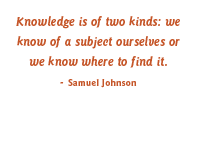| People |
| Philosophy |

 |
|
|
|
 |
<< GO BACK Getting Your Nonprofit Board On-Board
Download/Print: One of the great things about nonprofit boards is the passion they bring to their volunteerism. But passion alone is not enough to develop, plan, and provide the leadership necessary to have an effective, high-functioning organization. Board members of successful organizations are constantly challenging themselves to improve their approach to fulfilling the legal, fiduciary, and management responsibilities of the position. How do the most effective Boards operate? Nonprofit boards, no matter what their mission, have much in common. They are responsible for raising and disbursing funds, developing the organization's programs, hiring key staff to execute plans and policies, promoting the good work the organization does in the community, and creating sustainability to ensure they can continue to fulfill their mission. In order to grow, successful nonprofits focus their efforts in two major areas: Board Function Often, nonprofit organizations are started on a shoe-string. Their growth is organic and haphazard, fueled by the founder's vision and dedication. At some point, others are recruited to the cause, staff is hired, and the enterprise takes on a life of its own. Like any other organization, different skills are called for at different stages of development. Successful boards get to work on creating the structure necessary to fuel further growth. Effective boards have several aspects in common: a manageable size; a planned and proactive approach to recruitment and succession; term limits; written job descriptions; clear expectations for participation, fundraising, and leadership; new board member orientation with periodic review, assessment and training; and well-run meetings with written agenda, time limits, and full attendance. Organization The other main focus that a growing nonprofit needs is organizational effectiveness. The board, working in cooperation with the executive leader, should take the time to articulate a compelling mission, supported by a consistent, well-defined organizational culture. Other considerations that will enable the organization to ensure maximum effectiveness include a strategic approach to allocation of the organization's resources; clearly drawn lines of authority for the board, executive staff, and volunteers; annual budgets with regular review; competitive salary and benefits for the staff; and well designed marketing and donor relations plans. Most not-for-profit organizations grow organically. They often start with one person's passion to make a difference. By sheer strength of will the organization advances, getting by one day at a time, constantly grappling with scarce resources, until it becomes practically a badge of honor to do without. But as the programs build, staff is hired, and the community comes to depend on the services provided, it's simply no longer feasible to operate hand-to-mouth. Invariably, in the life of every maturing organization, there comes a time when systems and procedures have to be re-examined and changed. Nonprofit boards have a particular responsibility to step back and take a hard look at how they can operate more efficiently and effectively. Michelle Williams, Arts Council Napa Valley Interim Executive Director, describes how this venerable Napa nonprofit took a step back in order to move two steps forward in developing their board and their organization. Here is their story... Arts Council Napa Valley overcomes obstacles Although Arts Council of Napa Valley (ACNV) is in its 25th year of operating, massive budget cuts to state funding left the organization in a state not unlike a new nonprofit. Resources were extremely limited and the board had dwindled to a few hardy souls whose belief in the importance of the Council was all that kept them involved. However, since programs were already in place and the community was relying on the Council to continue its support services, much work had to be done concurrently to strengthen and build the board. One of the first steps was to expand the board. A committee was formed to create a matrix of needs for the board, taking into account skill sets, geography, a passion for arts, and connections to the artistic and donor community. New Board of Director applications were drafted, containing specific questions about the skills potential candidates could bring to the board such as special event planning, fundraising, recruitment, etc. Appropriate people were then identified, researched, and approached to join. This is an ongoing process as older board members fulfill their time commitments, and as ACNV identifies new needs for the board to be more effective. But even as new board members were recruited, the roles and responsibilities of board members were being refocused and rewritten. An early step was creating a new job description for all officers and general board members, as well as differentiating between what was board responsibility versus what was executive director or staff responsibility. When a staff and board are small, this can be particularly challenging. The board meetings were also revamped, including timed agenda items and focused committee reports. NewLevel Group brought in strategic planning and board building experts to guide both new and seasoned board members to the next level in effectiveness and productiveness. ACNV also needed to clarify its message and mission to the community. This was accomplished in a number of ways, including designing a new logo and creating new collateral materials, but the most important part of the process was the creation of a new mission statement. Another committee worked to identify the key functions of the council, and crafted a strong, colorful new statement to describe ACNV's work. Finally, new donor packets were created, detailing ACNV programs and initiatives, and outlining ACNV's role in the arts community. Arts Council's board is a work in progress, but one that has grown and changed drastically in the last year. We continue to refocus and build, regularly stepping back to take a fresh look and see what the next step is to building a strong, focused, and committed Board of Directors. |
||
 |
 |
 |